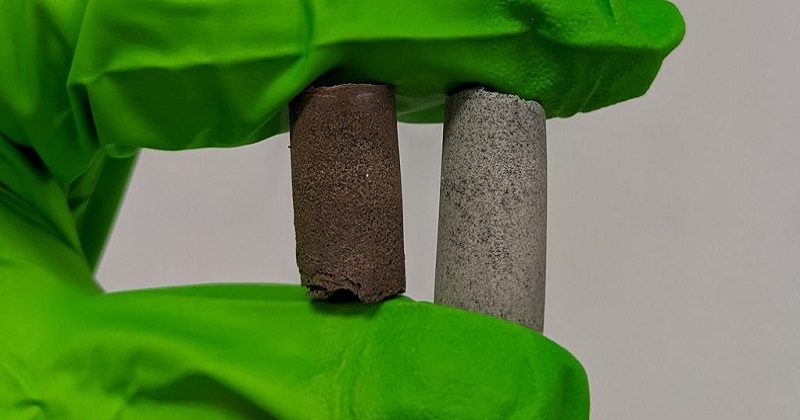
Scientists have developed a concrete-like substance composed of interplanetary dust, as well as astronauts’ blood, sweat and tears, which may make building a house on Mars much easier.
The cost of transporting even a single brick to Mars is projected to be about $2 million, which implies future Martian colonists would have to rely on resources available on-site for construction and shelter.
However, researchers from the University of Manchester proved that human serum albumin, a common protein found in blood plasma, may function as a binder for the simulated moon or Mars dust, resulting in a concrete-like substance.
According to the study published in the journal Materials Today Bio, the resulting new material, AstroCrete, showed compressive strengths as high as 25 MPa (Megapascals), roughly the same as the 20-32 MPa observed in regular concrete.
Scientists discovered that adding urea — a biological waste product that the body produces and excretes through urine, sweat and tears — increased the compressive strength by over 300 percent, with the best performing material having a compressive strength of nearly 40 MPa, significantly higher than ordinary concrete.
As per to Dr. Aled Roberts, a varsity researcher who collaborated on the project, the new approach has significant benefits over many previous proposed construction processes on the moon and Mars. ‘Scientists have been trying to develop viable technologies to produce concrete-like materials on the surface of Mars, but we never stopped to think that the answer might be inside us all along,’ he said.
Also Read: Instagram feature to let users prioritise accounts in feed: Report
A crew of six astronauts could manufacture over 500 kg of high-strength AstroCrete during the duration of a two-year mission on Mars, researchers said.
Each crew member may create enough AstroCrete to extend the habitat to house a second crew member, if used as a mortar for sandbags or heat-fused regolith bricks, doubling the housing available with each subsequent mission.
Historically, animal blood was utilised as a mortar binder. ‘It is exciting that a major challenge of the space age may have found its solution based on inspirations from medieval technology,’ said Roberts.
The researchers discovered that blood proteins denature or ‘curdle,’ to produce an expanded structure with connections known as ‘beta sheets’ that binds the material together firmly.

Post Your Comments